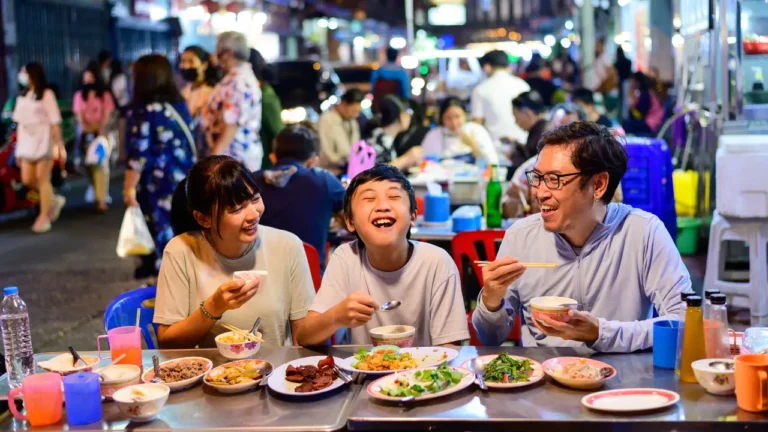The Best Street Food Hunting Spots Around Southeast Asia
Southeast Asia has gradually become a food lover’s paradise, along with its growing popularity among travelers. SEA is home to some of the most vibrant and diverse street food scenes in the world. This region is a culinary playground where the smoky aroma of grilled satays fills the air in Jakarta, the tangy, fish-based broth of Assam Laksa simmers in Penang, and the spicy, coconut-infused curries of Indonesia sizzle over open flames.
Street food here isn’t just about quick, delicious bites – it’s a window into the cultures, traditions, and daily lives of the people who prepare these dishes with passion and precision. We will take you on a flavorful journey through the best street food spots in Southeast Asia, from the bustling markets of Thailand to the hidden hawker centers of Singapore, perfect for travelers hungry for food trip adventure and unforgettable culinary experiences.
Thailand – A Street Food Haven
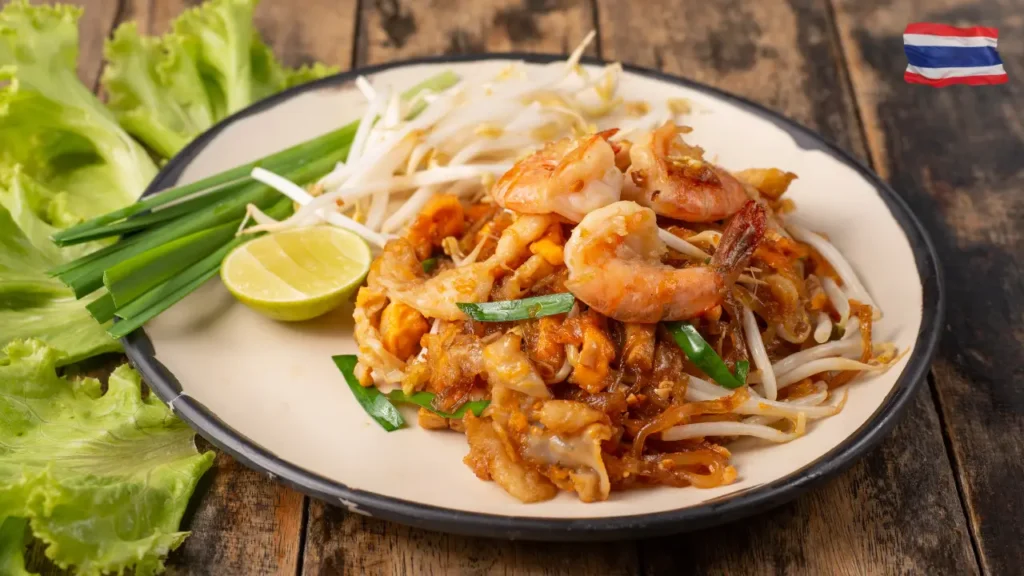
Thailand’s street food is legendary, attracting millions of visitors annually with its incredible variety, vibrant atmosphere, and captivating blend of sweet, sour, spicy, and savory flavors. Every street corner is filled with the enticing aromas of freshly cooked dishes, bustling with vendors who have perfected their culinary craft over generations, offering both traditional favorites and innovative new delicacies that continue to delight food lovers from around the globe.
- Bangkok’s Yaowarat Road (Chinatown) – Renowned for bustling energy and neon-lit streets, Yaowarat serves mouth-watering dishes such as Pad Thai (stir-fried rice noodles), sweet and creamy Mango Sticky Rice, and freshly grilled seafood. Don’t miss “Jay Fai,” the Michelin-starred vendor known for her rich crab omelet and seafood dishes.
- Chatuchak Weekend Market – Far more than a shopping spot, Chatuchak Market offers a true culinary adventure. Enjoy Northern Thai sausages infused with lemongrass and chili, freshly grilled pork skewers served hot off the charcoal grill, and refreshing coconut ice cream topped generously with sweet corn and peanuts—perfect for cooling down in the tropical heat.
- Khao San Road – A vibrant street beloved by global travelers, known for unique street foods from daring insect skewers to comforting sweet Thai pancakes stuffed with fresh banana slices, chocolate syrup, and condensed milk.
Read also: Asia: 6 Unforgettable Places to Visit for Cultural Destinations
Vietnam – A Symphony of Flavors
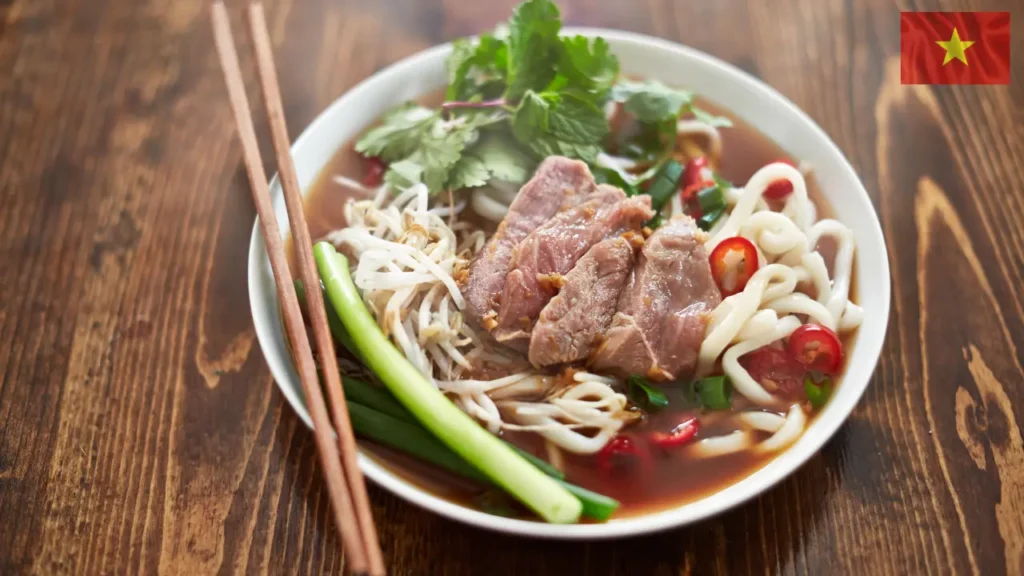
Vietnamese street food showcases freshness, balance, and distinctive regional tastes, reflecting the country’s rich history, diverse climates, and agricultural abundance. Vietnam’s street food culture is a rich mosaic of flavors, shaped by centuries of history, diverse climates, and deeply rooted culinary traditions.
The bustling energy of Ho Chi Minh City, with its endless stream of motorbikes and vibrant street corners, contrasts sharply with the nostalgic charm of Hanoi’s ancient, maze-like alleys, where the aroma of grilled meats and freshly brewed coffee fills the air. Whether it’s the smoky, char-grilled meats of the south or the fragrant, herb-laden broths of the north, Vietnamese street food captures the spirit of a culture that lives and breathes through its cuisine.
Vietnamese street food is not just about flavor, but also about the cultural significance of sharing a meal, often enjoyed on tiny plastic stools in vibrant, chaotic street settings where the air is filled with the sizzling sounds of grills and the aromatic steam of noodle soups.
- Ho Chi Minh City (Saigon) – Immerse yourself in crispy baguette-based Banh Mi, comforting aromatic bowls of Pho (rice noodle soup with fragrant herbs and tender beef), and refreshing Goi Cuon (spring rolls filled with shrimp, pork, and fresh vegetables), best enjoyed at bustling markets like Ben Thanh.
- Hanoi’s Old Quarter – Old Quarter in Hanoi known for its atmospheric streets filled with small eateries, Hanoi offers specialties such as Bun Cha (char-grilled pork served with rice noodles and fresh herbs) and creamy Egg Coffee, blending robust Vietnamese coffee with sweet, frothy whipped egg yolk. Visit the famous “Cha Ca La Vong” for legendary turmeric-infused grilled fish.
- Da Nang’s Night Markets – Delight in regional dishes such as the flavorful and vibrant Mi Quang (turmeric noodles topped with shrimp, pork, peanuts, and fresh herbs) and the spicy, lemongrass-infused pork skewers known as Nem Lui.
Malaysia – A Culinary Crossroads
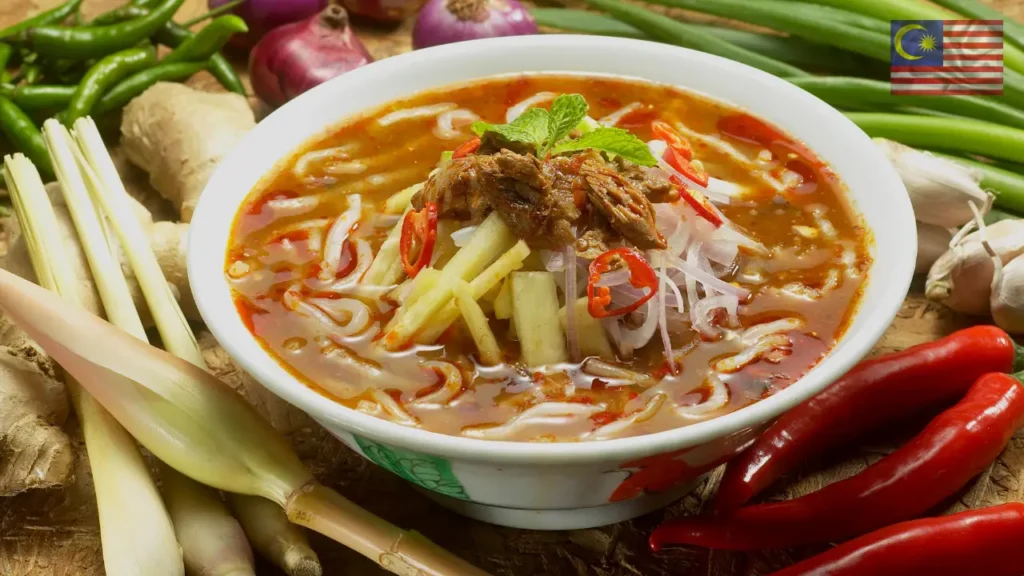
Malaysia’s street food is an exciting reflection of its multicultural heritage, blending influences from Malay, Chinese, Indian, and Peranakan cultures. This rich culinary tapestry is evident in the wide variety of flavors, cooking techniques, and ingredients that come together to create iconic dishes.
Malaysian street food captures the essence of the nation’s diverse cultural history, with fiery, fish-based flavors in Penang’s iconic Assam Laksa and the rich, coconut-infused curries of Malacca. These dishes reflect the multicultural influences that define Malaysian cuisine, blending Malay, Chinese, Indian, and Peranakan cooking traditions into a vibrant culinary tapestry.
Street food here is not just about quick bites but is deeply intertwined with Malaysia’s social fabric, reflecting its multicultural identity and vibrant food culture.
- Penang’s Georgetown – Widely regarded as Malaysia’s food capital, Georgetown captivates food lovers with signature dishes like smoky, savory Char Kway Teow (stir-fried flat noodles with prawns and eggs), tangy, aromatic Assam Laksa (fish-based spicy noodle soup), and fragrant, coconut milk-infused Nasi Lemak. Kimberly Street is a must-visit, with its bustling stalls offering authentic culinary experiences.
- Kuala Lumpur’s Jalan Alor – Famous for its vibrant evening scenes, Jalan Alor serves up delicious grilled satays, succulent barbecued chicken wings, spicy noodle dishes, and mouth-watering Chinese stir-fries.
Indonesia – Bold Flavors and Rich Spices
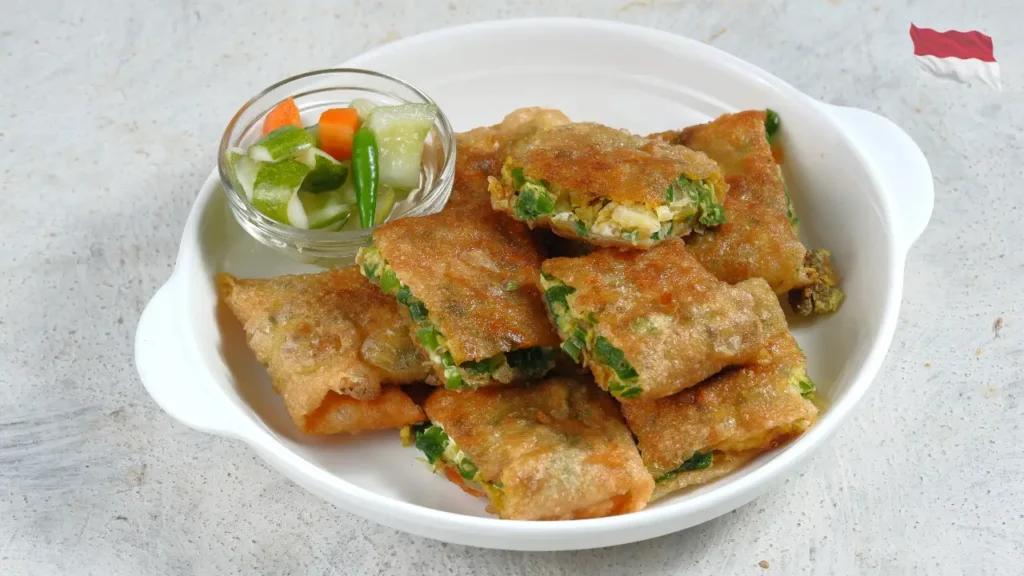
Indonesia’s street cuisine offers robust, spicy flavors, deeply influenced by the country’s diverse cultures and abundant natural resources. Each island has its own unique culinary traditions, resulting in a rich tapestry of flavors that range from the fiery heat of Sumatran dishes to the aromatic, coconut-based flavors of Javanese and Balinese cuisine.
Indonesian street food is characterized by its bold use of spices, vibrant colors, and complex flavors, often incorporating ingredients like galangal, lemongrass, kaffir lime leaves, and fiery sambal chili paste. Street vendors here often prepare dishes with recipes passed down through generations, offering a taste of Indonesia’s rich culinary heritage at every corner.
- Jakarta’s Street Food Hubs – Vibrant food streets such as Jalan Sabang and Blok M are beloved by locals. Delight in crispy Gorengan (assorted fried snacks), indulgent Martabak (sweet or savory stuffed pancakes with fillings like chocolate, cheese, or minced beef), and richly spiced Sate Padang (skewered beef topped with spicy sauce).
- Yogyakarta – Cultural and Culinary Richness – Dive into Yogyakarta’s traditional dishes including Gudeg, a slow-cooked stew of tender young jackfruit simmered in sweet coconut milk and palm sugar, served alongside boiled eggs and chicken; soft, sweet Bakpia, pastries filled with mung bean paste or chocolate; and flavorful Sate Klathak, grilled lamb skewers seasoned simply with salt and pepper over charcoal. The vibrant Malioboro Street is ideal for exploring these authentic flavors.
- Bali’s Street Food Scene – Explore beyond the famous beaches to local markets like Sanur Night Market and Gianyar Night Market, offering iconic dishes such as crispy-skinned Babi Guling (suckling pig roasted with turmeric, lemongrass, and spices), fragrant Satay Lilit (minced meat mixed with coconut milk and grilled on lemongrass sticks), and simple yet satisfying Nasi Jinggo, rice portions wrapped in banana leaves accompanied by spicy sambal.
Read also: Fascinating History of Spices
Singapore – Hawker Heaven
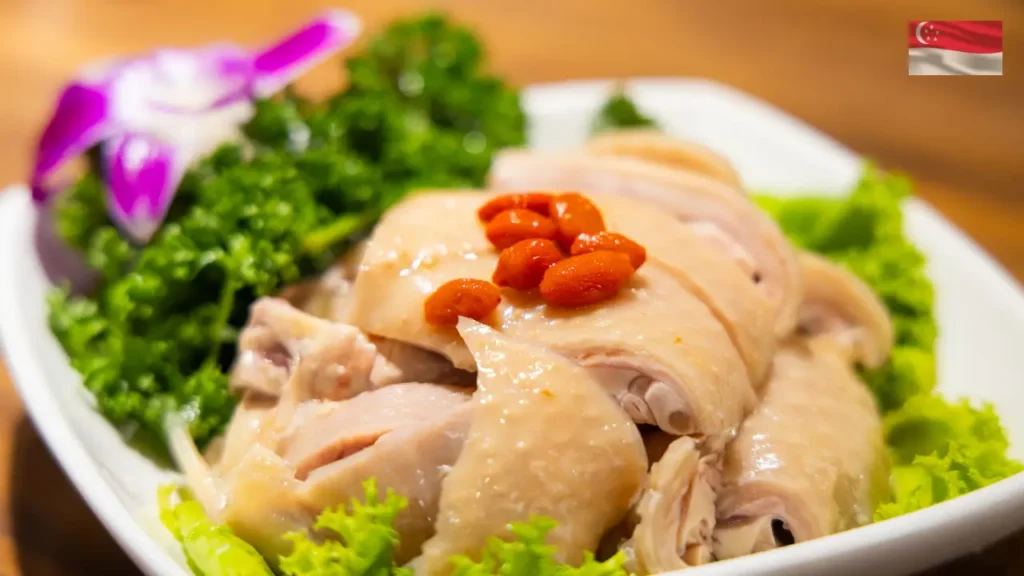
Singapore’s organized hawker center scene provides a convenient introduction to Southeast Asian street food, offering a perfect blend of affordability, variety, and hygiene that makes it an ideal starting point for travelers new to the region’s culinary landscape.
These vibrant food hubs capture the multicultural spirit of Singapore, where Chinese, Malay, Indian, and Peranakan influences come together to create a diverse array of flavors. Hawker centers are deeply embedded in Singapore’s cultural identity, serving not just as places to eat, but as communal spaces where locals gather to share stories, celebrate milestones, and enjoy everyday moments over a hearty meal.
- Maxwell Food Centre – Famed for its perfectly seasoned Hainanese Chicken Rice and aromatic, smoky Char Kway Teow.
- Old Airport Road Food Centre – Popular with locals, serving spicy bowls of rich coconut-based Laksa, savory stir-fried seafood noodles (Hokkien Mee), and comforting, flavorful Hainanese Curry Rice.
Essential Tips for Street Food Hunting
- Food Safety – Choose busy stalls with fast turnover to ensure fresh food. Look for vendors with long lines, as this usually indicates trust and quality. Avoid stalls where food appears to be sitting out for long periods, and opt for freshly cooked items where possible. Be cautious with raw or undercooked foods and always carry hand sanitizer.
- Local Insights – Interact with locals for hidden gems and authentic recommendations. Locals often know the best stalls that offer fresh, flavorful dishes. Don’t hesitate to ask for their personal favorites, as this can lead you to lesser-known, truly authentic food experiences that tourists often miss.
- Budget Wisely – Street food is generally affordable, but setting a daily budget helps maximize your culinary adventure. Plan to visit multiple stalls to sample a wide variety of dishes without overspending. Many street food hubs operate on a cash-only basis, so keep small bills handy for quick transactions.
- Respect Local Customs – Familiarize yourself with basic dining etiquette to enrich your experience and show cultural respect. In some cultures, using your left hand for eating is considered impolite, while slurping noodles or sharing dishes can be a sign of appreciation. Always be mindful of local customs to fully appreciate the cultural context of the food you’re enjoying.
Read also: How to Balance Budget and Experience While Traveling
Embark on a Culinary Adventure
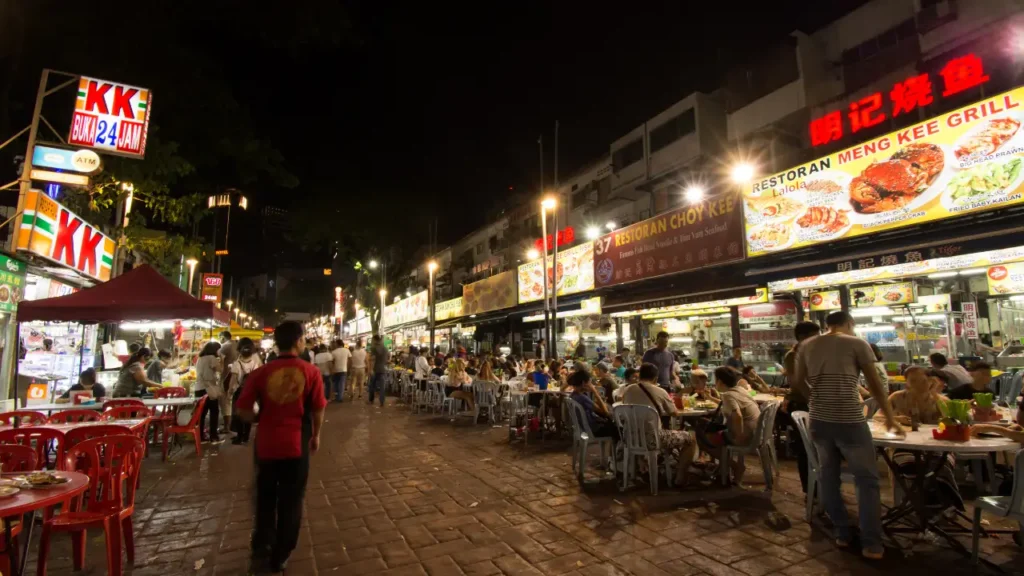
Street food exploration in Southeast Asia is not just about tasting dishes—it’s about immersing yourself in the rich cultural tapestry of a diverse and dynamic region. Each bite tells a story, reflecting the history, heritage, and traditions of the people who craft these flavors. Whether the bustling hawker centers of Singapore or the smoky, spice-laden streets of Jakarta, street food captures the essence of Southeast Asia’s vibrant cultures and a one-of-a-kind food trip experience. Pack your bags, bring your appetite, and get ready to explore not just the flavors but also the stories behind each dish.
Read also: Sustainable Dining: Eco-Friendly Restaurants In The World

